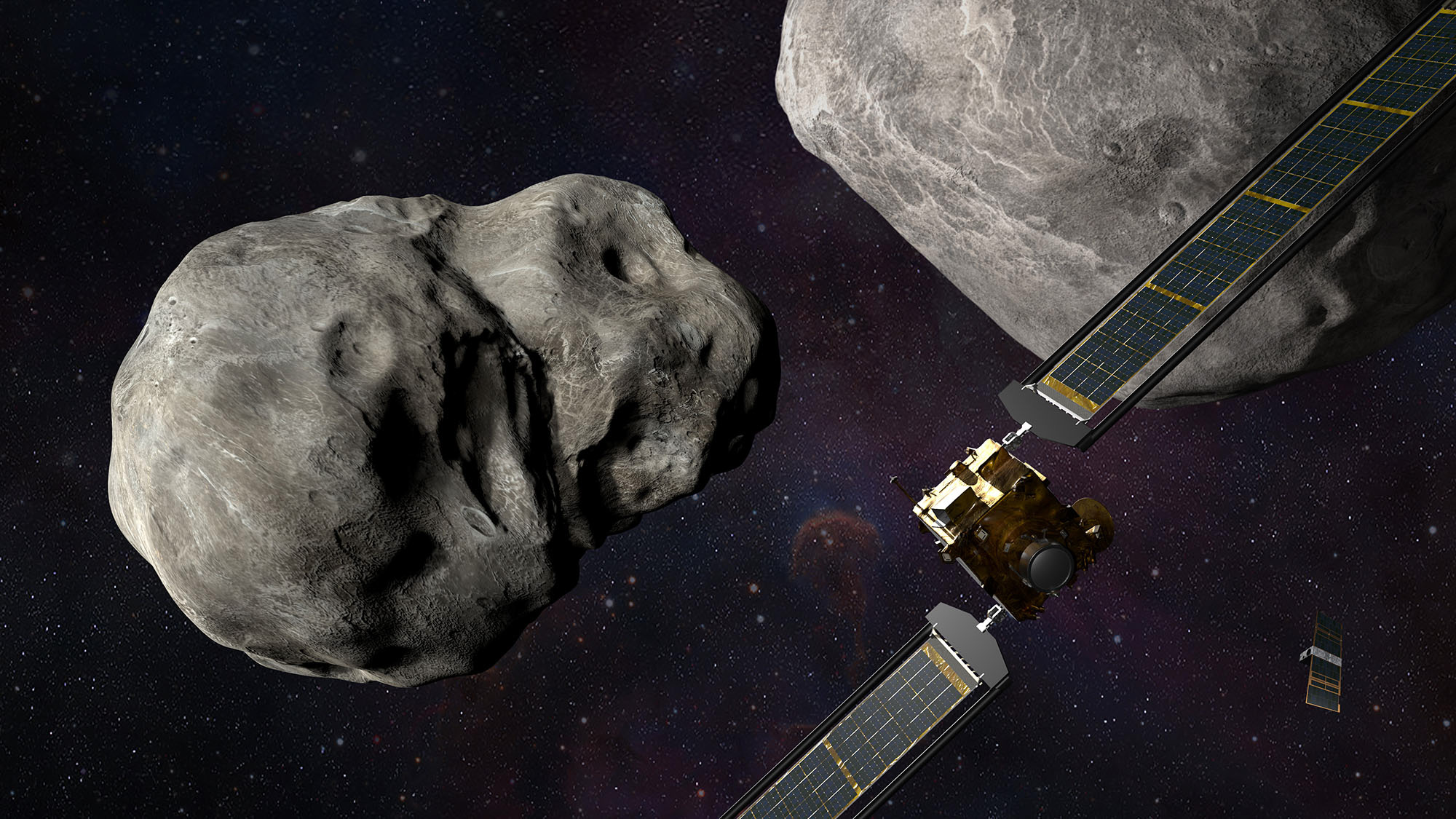MIT researchers have developed a way to map an asteroid’s interior structure, or density distribution, by analyzing how the asteroid’s spin changes as it makes a close encounter with more massive objects like Earth. The technique could improve the aim of future missions to deflect an asteroid headed for us, as demonstrated in NASA’s Double Asteroid Redirection Test in September.
Knowing what’s inside an asteroid could help scientists plan the most effective defense. “If you know the density distribution of the asteroid, you could hit it at just the right spot so it actually moves away,” says Jack Dinsmore ’22, coauthor of the paper on this work with Julien de Wit, PhD ’14, an assistant professor in the Department of Earth, Atmospheric, and Planetary Sciences.
“It’s similar to how you can tell the difference between a raw and boiled egg,” de Wit says. “If you spin the egg, the egg responds and spins differently depending on its interior properties. The same goes for an asteroid during a close encounter.”
Don’t settle for half the story.
Get paywall-free access to technology news for the here and now.
